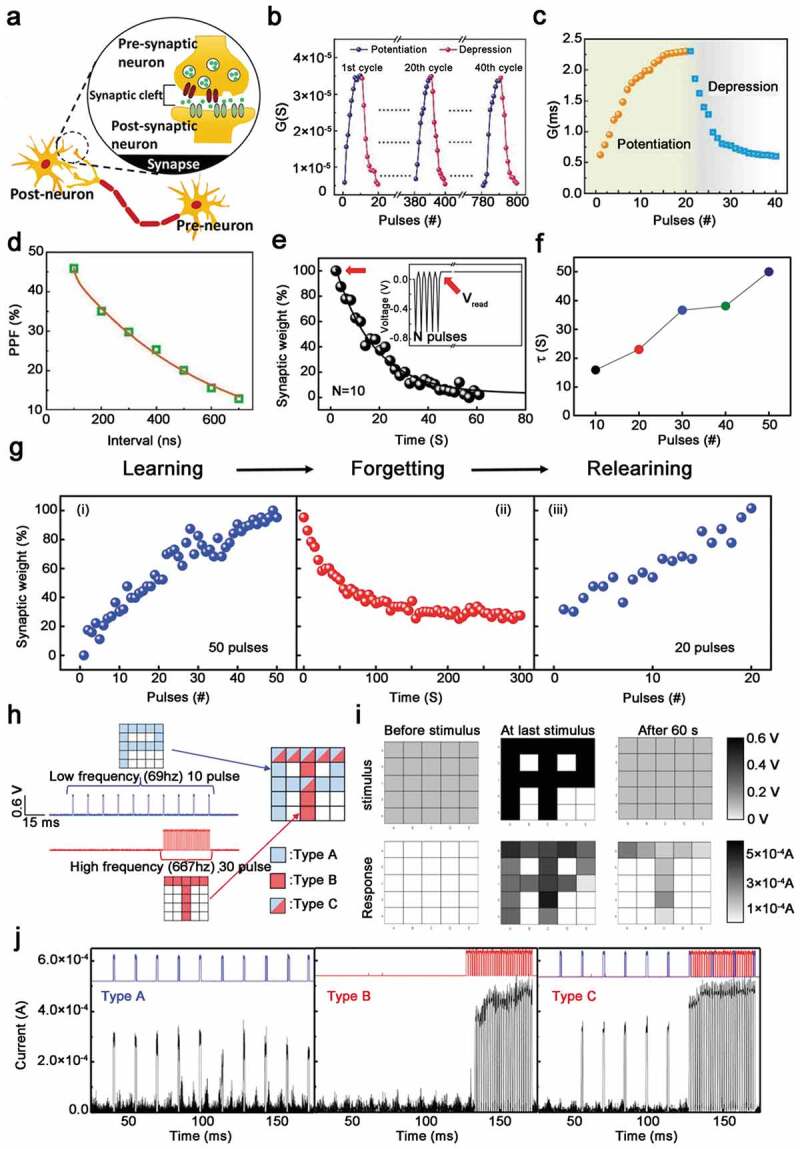Figure 7.

Electrical properties and applications of artificial synaptic devices based on two-terminal device. (a) Schematic diagram of synaptic plasticity regulation from pre-synaptic neurons to post-synaptic neurons. Reprinted with permission from [108]. (b, c) Repeated enhancement and suppression characteristics of AgNCs@ SF-based memristors. (d) PPF index is a function of the pulse interval time (from 100 to700 ns). (e) Changes in synaptic weight under different 10 continuous voltage pulses. Reprinted with permission from [11]. Copyright 2019 WILEY‐VCH. (f) Transition from short-term plasticity (STP) to long-term plasticity (LTP) caused by continuous stimulation. (g) The conductance is enhanced under 50 consecutive pulse sequences, simulating the learning function of the human brain. Synaptic weight decays with time for 300 s, simulating the forgetful process of the human brain. Subsequently, the re-learning function of the human brain is simulated, and 20 consecutive spikes are applied to increase the synaptic weight to the state after the first learning process. Reprinted with permission from [35]. Copyright 2017 American Chemical Society. (h) Use biocompatible artificial synaptic array to memorize two pictures, input 10 times of low-frequency P and 30 times of high-frequency T on a 5 × 5 biocompatible artificial synaptic array to memorize the letters of P and T. (i) Biocompatible artificial synaptic array applied stimulation and current response before stimulation, at the last stimulation and after 60 s. (j) The current response of an artificial synapse of three stimuli types as shown in (h). Reprinted with permission from [108]. Copyright 2018 American Chemical Society
